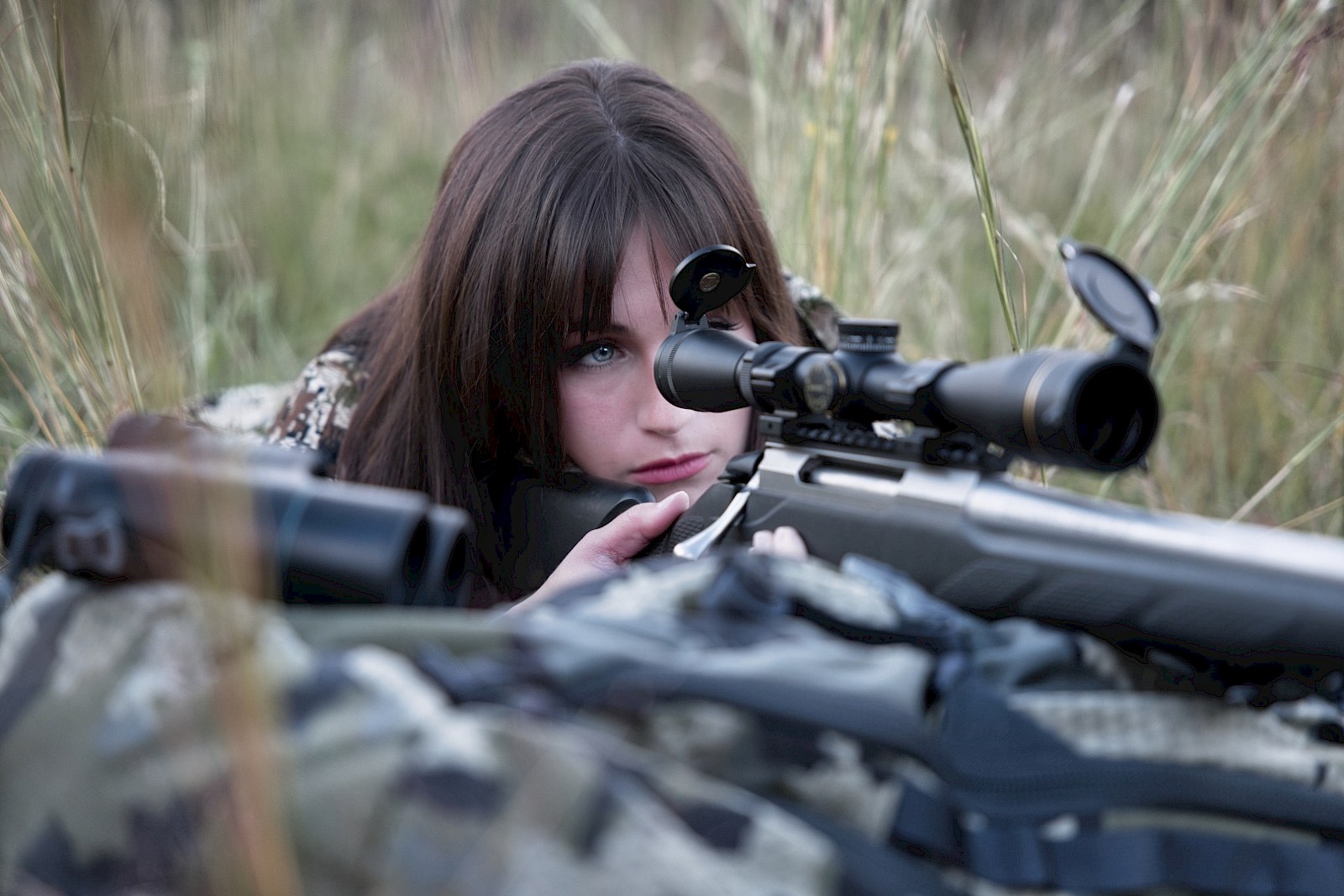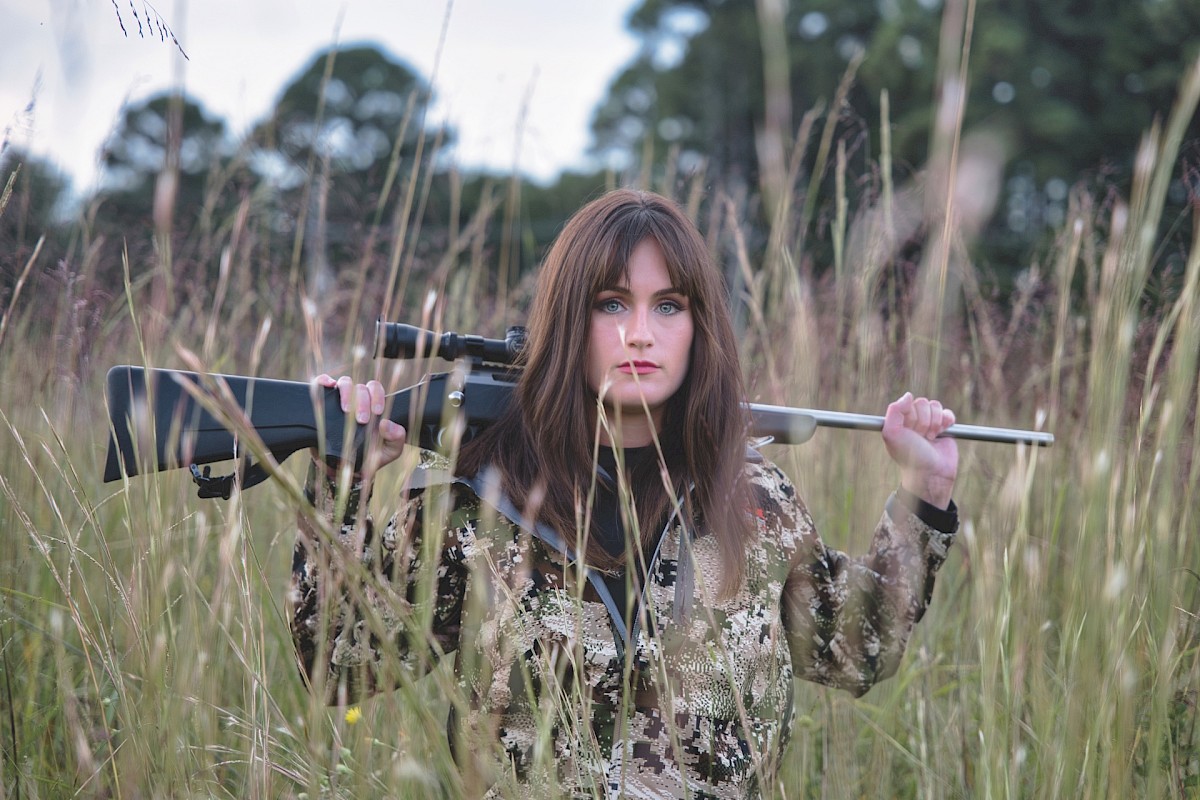Adventure in the Crosshairs
Mist drains over the mountains and dissipates into the chiseled valley’s belly. At its peaks, clouds are reborn again and again—a contagion of wispy foam. The vapors bind to the chill under the sun and fill the space left between heaven and earth. Among the stillness in the air, flocks of sheep faintly bleat.
Longtime local Kendal Howe works as the payroll services coordinator for Texas A&M-Texarkana but cashed in some vacation days, traveling hundreds of miles north for a big Alaskan sheep hunt. In August, after months of preparation, Howe and her father, Chad Rowe, spent their nights in tents and their days scouring the Wrangell Mountains with guns in tow.
In the summer of 2020, Howe’s father called and proposed a wild adventure. She had little hunting experience, but that didn’t stop her. Howe began intensive training that November. The entire trip lasted 16 days.
“I didn’t hesitate to say yes,” said Howe. “Hunting, specifically sheep hunting, is one of his favorite things to do, and I knew that while it would be super hard and I would have to do some pretty strenuous training to keep up, being able to spend time with my dad like that would be the highest quality there is.”
The father-daughter duo endured harsh conditions. Temperatures ranged between 30-50 degrees, and the Alaskan landscape was picturesque, yet taxing. Nevertheless, on the last day of the trip, she conquered. Using a Tikka 7mm-08 with special loaded rounds, Howe shot a rare, double broomed, full curl ram.
“‘Double broomed’ means he fought enough with the other rams that his lamb tips, just the first six inches or so of his horns, were snapped off,” said Howe. “He had lichen growing in his horns too. He was a fantastic animal, and I couldn’t have asked for a better hunt or outcome.”
Alaska was important to her and unforgettable. During their downtime, Howe stayed occupied by journaling on her phone. She says that words fell short of capturing the amazing experience.
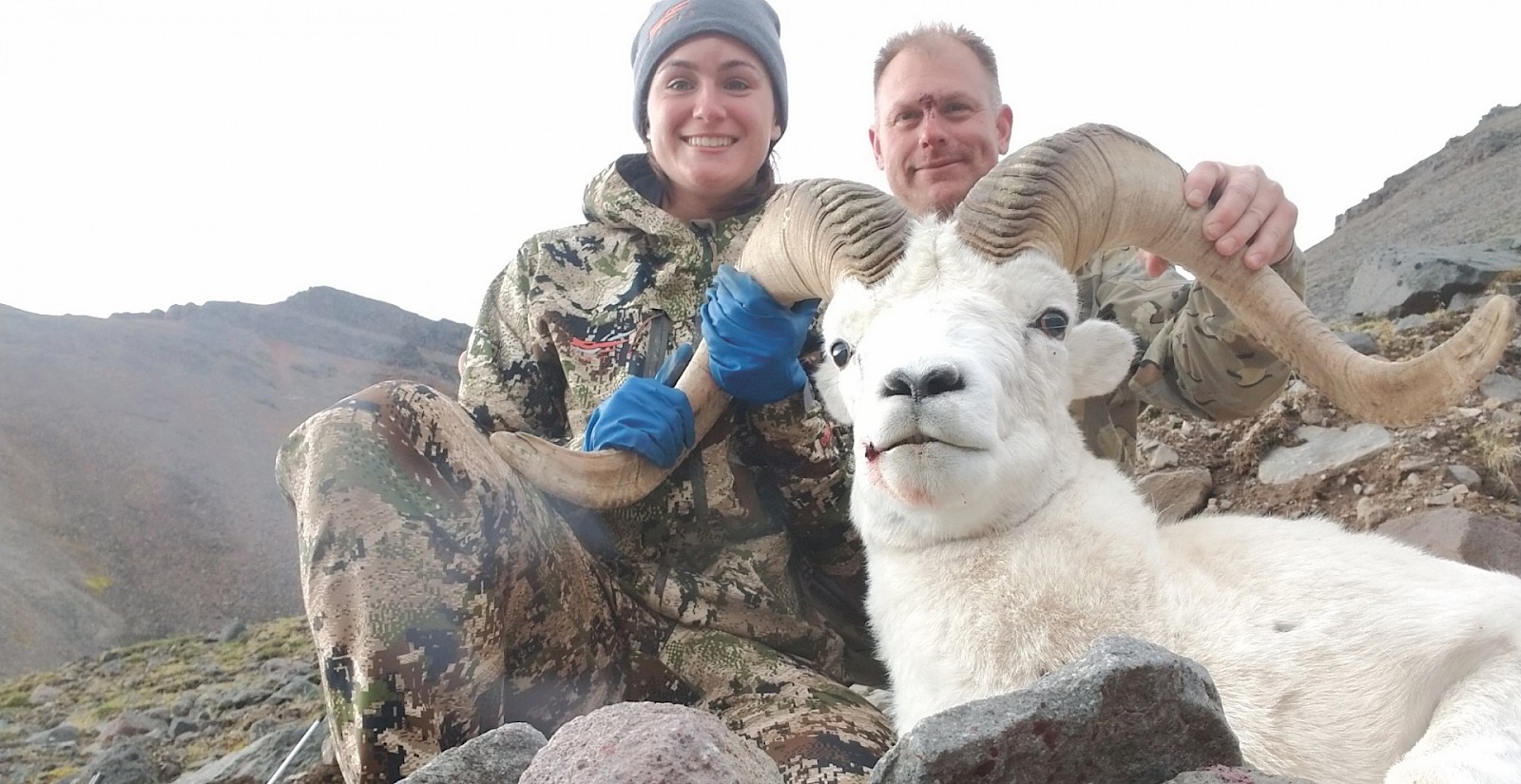
“Monday, we loaded up our gear and flew out to Chisana, [Alaska], near the southeastern [border with Canada],” said Howe; “we would hunt near there but had one more flight before making it to our actual hunting spot.” They spent one night in Chisana and the next morning was “sheep opening day.”
Chisana is in southeast Alaska with the Wrangell Mountains as its backbone, spanning the Gulf of Alaska’s shoreline. Howe and her dad did all their hunting in a valley nestled within. The terrain there is dense; much of the Wrangell Mountains are only reachable by bush plane.
“My dad has his pilot’s license and an out-of-this-world, state-of-the-art Cessna 175,” she said. “He has spent a lot of time and resources customizing this aircraft so we could land in the bush in places that most planes that size can’t.”
Howe spent her childhood in Alaska. Her father is still a resident which opened considerable opportunities. According to her, Chad’s an expert pilot and “an assistant guide for an outfitter in Alaska.” As his daughter, the state considers her a “qualifying relative” so it did not require them to have an additional hunting guide.
They flew 25 minutes to the hunting spot and landed on a strip nearly undetectable from the air. Next, they set up a “bear fence” to protect the plane.
“Bears will eat petroleum products like tires and fuel. They’ll eat anything really,” said Howe, “so the bear fence was a way to keep them off the plane so we could get back out of the bush after our hunt. It consisted of a solar panel with power flashing, motion sensor lights and an electric fence.”
Once they secured the plane, Howe and her father set out for the base camp, around 5,400 feet elevation. They trekked close to three miles uphill through tundra grasses. “When we got to base camp, we set up our tent and did some ‘glassing,’” she said. The term “glassing” means looking for sheep through binoculars and a spotting scope. “Because [my dad and I] had flown in that day, we weren’t allowed to hunt; it’s part of Alaska’s hunting regulations. So, we relaxed for the evening and turned in early.”
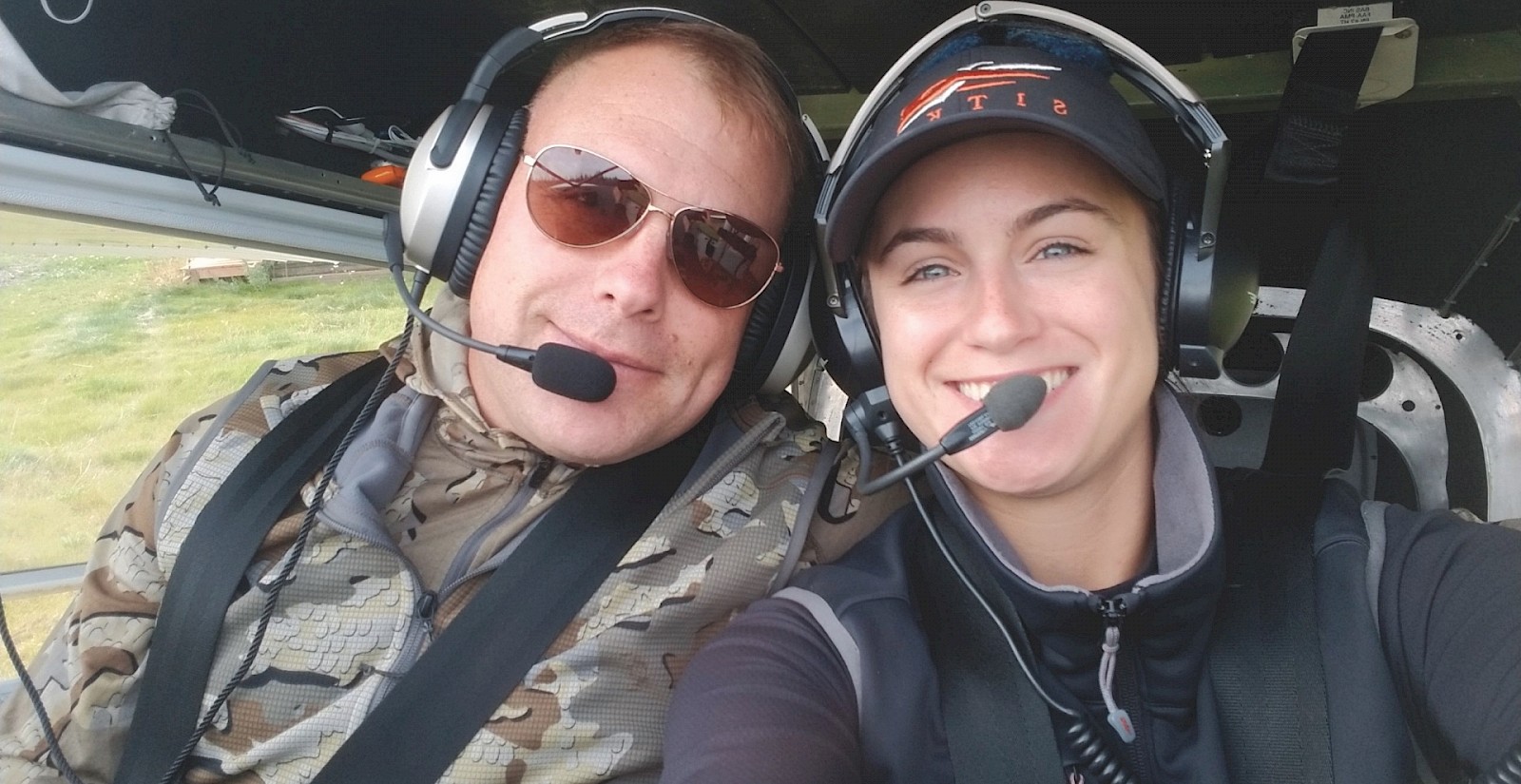
After eating breakfast and gathering their gear, the two began hiking on a cloudy Wednesday, contending with winds against their back while trying to remain unseen. This marked the first day of the hunt.
“We headed up the middle of the valley trying to get a knoll in the middle of the heart of the valley [towards the back of the U-shape] where the sheep could be seen feeding for the morning,” said Howe. Its terrain was rockier. The river that snaked through the entire valley intervened their trail several times, leaving them no option but to traverse it. The weather remained their biggest struggle.
“Because the wind was at our backs, it carried our scent right up to the sheep,” said Howe. “[Sheep] also have really keen eyesight, so we had to be super careful and keep hills or trees or bushes behind us to hide our profiles. Wednesday was the day I really experienced glassing and being cold.”
Howe and her dad had to stop midway up the valley, hoping for the wind to settle. Positioned on the side of a hill and vulnerable, she says she wore her heaviest base layer, vest and puffer and was still chilled. There was little to quell the never-ending wind spell. “This is when I learned one of my favorite warming tactics,” she said. “My dad would make apple cider with boiled water from the jet boil stove we had and mix everything up in my water bottle. I would then slip my very warm water bottle into my jacket and have a personal heater until it was cool enough to drink. That saved my hide several times during this hunt.”
The wind never changed direction, and they ended up scaring “some good-looking rams” in their attempt to reach their goal hill, but Howe and her father finally reached the top of the knoll. The opportunity for a good shot never presented itself, so they called it a day. Once they reached camp that evening, it rained, preventing any hunting through the next day.
On Friday [August 13], they began the hike up the left side of the valley; the initial elevation was 5,400 feet. They ended up in the clouds at 6,800-6,900 feet. “This part of the mountain is ‘affectionately’ dubbed the ‘Stairway to Heaven’ by anyone who hunts there,” said Howe. “It’s a steep climb that brings you to a saddle halfway up the mountain; from there, the side of the mountain looks like a giant set of stairs until you reach the top. We would get to a point and out of the mist and clouds another would appear.” It is possible the date jinxed the hunt, but it’s certain that Howe will never forget “Friday the 13th.” It was a cold and wet day that started really early with a hard climb. By mid-afternoon, they spotted a group of four rams over on the next canyon. “We got into position and waited nearly 45 minutes for the fog to clear to give us a clear shot,” said Howe. “With the mist, my dad couldn’t get a read on his rangefinder. We were thinking the rams were 350 yards away, so I took aim and fired, but I missed it! The rams bolted, but because they didn’t know what that was or where it came from, they came back maybe 20 minutes later.” This gave the third member of their hunting party the chance to get his ram, which he successfully did at 526 yards. Even though she didn’t nail her first try, her optimism was relentless.
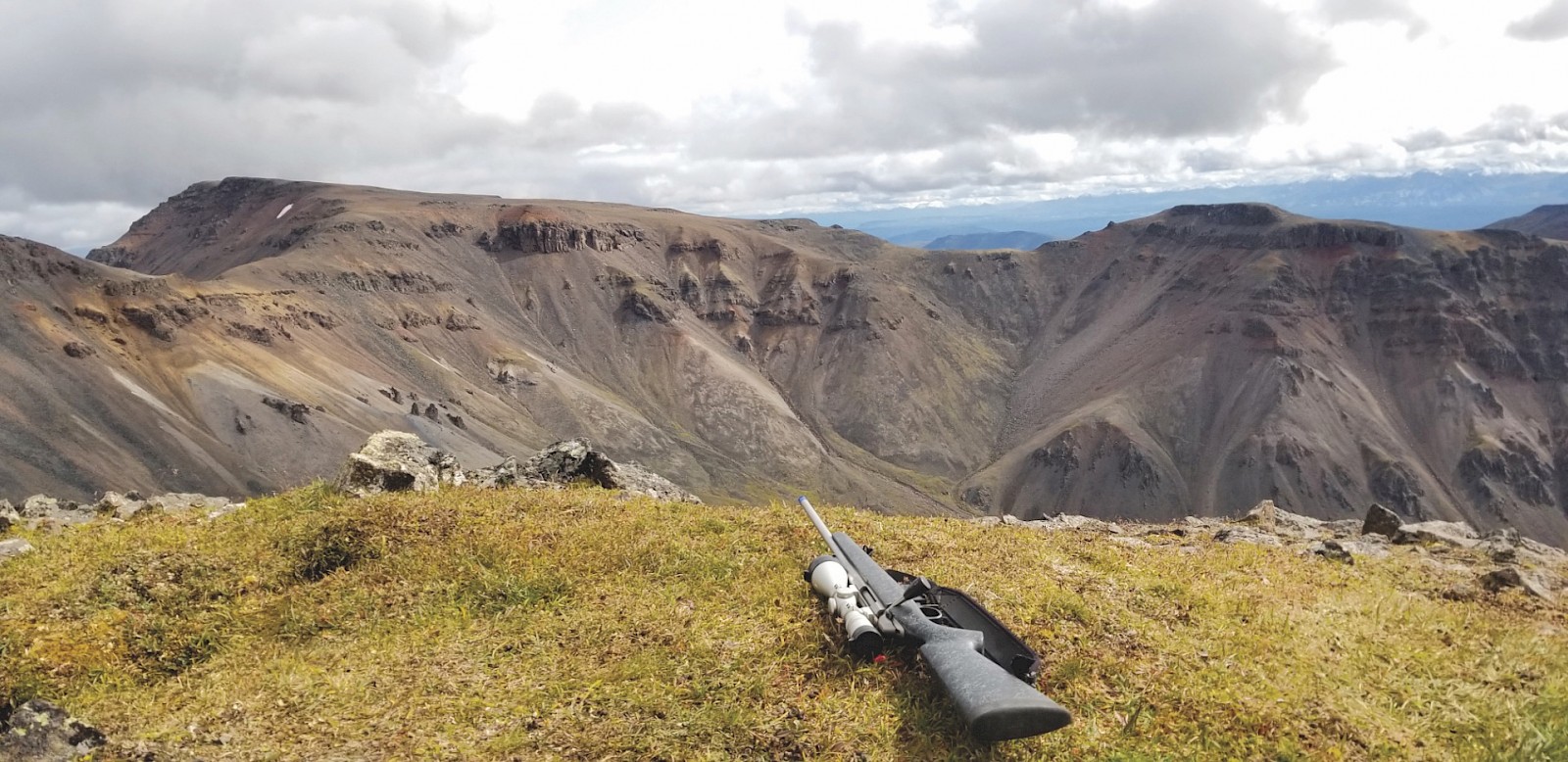
Sunday was the last day of the hunt. It was 36 degrees that morning; the snow-capped mountains were proof of that. They started the morning earlier than the rest by climbing the right side of the valley. Midway up the steepest terrain she’d ever experienced, Howe says she looked at her dad, “And told him in no uncertain terms that he was crazy” and asked what he had gotten her into. They made a personal record, climbing to the elevation of 7,200 feet. “I turned and kissed the closest rock to me. I was just so happy to be at the top.”
After five hours of getting into position, Howe spotted her ram Toby, named so by her dad the day before in an all day glassing session. It was now or never. “I took a few steadying breaths, put my ram in my crosshairs, and fired. I did not miss this time,” she said. “When we got to him, I knelt and lifted my rifle to my shoulder. He stood up to face me. It was like something out of a movie, that ram facing me down like that; it was amazing.”
The flock would not leave the ram’s side until Howe arrived. It turned out that he was not only rare, but a patriarch. “[His flock] stood in the nearby mountain watching him,” said Howe. “Everything went still and quiet. It was the most majestic thing I have ever been privileged to be a part of. My dad said rams only do that for their leader.”
The big Alaskan sheep hunt comprised dangerous trials, tested strength and pushed endurances to the limit; however, the remarkable environment, self-realization, and time spent with her father in the great outdoors was unmatched.
“My emotions were all over the place. I was so excited to be blessed enough to have this opportunity,” said Howe. “I thanked God for allowing me to take that ram. I was proud of how hard I had to work to meet this goal. I made sure my rifle was on safety and gave my dad the biggest hug, sobbing away happily.”
